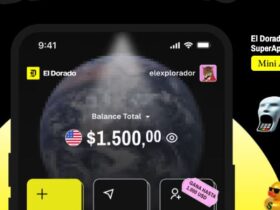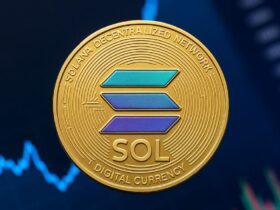The goal is to increase stablecoin adoption and expand real-world use cases.
The network comes with a new stablecoin, called USDG, that “provides economic benefits.”
Cryptocurrency firm Paxos announced the launch of the Global Dollar Network, a platform designed to accelerate the global adoption of stablecoins.
This network, powered by firms from the bitcoin (BTC) and cryptocurrency ecosystem such as Anchorage Digital, Bullish, Galaxy Digital, Kraken, Nuvei, Paxos and Robinhood, seeks expand use cases in the real world of these cryptocurrencies backed by fiat money or other assets.
The project begins in an invitation-only phase, but is projected as a union of resources and experience between its initial partners with the aim of increasing the adoption of stablecoins.
“Starting today, other leaders from various sectors including custodians, exchanges, payment fintechs, merchants, protocols, card networks, banks and investment platforms can join the Global Dollar network to support innovation in the global monetary movement.” ”the company stated.
According to advertisers, many current stablecoins do not meet the standards and consumer protections required by global companies. Additionally, enterprise adoption is “restricted by outdated business models that impose high costs on the cryptocurrency ecosystem and the overall economy,” they said.
“These shortcomings hinder overall innovation and represent a missed opportunity for payment providers, custodians, exchanges, and investment platforms looking for secure, low-cost stablecoin options,” they indicate.
Global Dollar Network seeks to remedy this situation, in the opinion of participating companies. They specify that this network is “revolutionizing this market by offering a trusted stablecoin that provides proportionate economic benefits to all partners.”
That stablecoin is Global Dollar (USDG), a new “safe and reliable” stable cryptocurrency, issued from Singapore by Paxos, which is “substantially compliant” with the Monetary Authority of Singapore’s upcoming stablecoin regulatory framework.
USDG reaches a saturated market
The USDG stablecoin, whose arrival was announced a year ago, enters a market already saturated by major competitors such as USD Tether (USDT) and USD Coin (USDC), which have established a significant presence and broad adoption within the ecosystem. cryptocurrencies. These competitors have demonstrated strong network effects and enjoy high liquidity and acceptance in both traditional commerce and decentralized finance (DeFi) applications.
Furthermore, the launch of USDG occurs in a context where several companies, including large banking institutions, are exploring or planning the issuance of their own stablecoins, as reported by CriptoNoticias.
The arrival of new stablecoins on the market not only increases competition, but could also redefine how these assets are perceived and used in global transactions, remittances, and as stores of value or means of payment in the future.
Carlos Cascarilla, CEO and co-founder of Paxos, commented that stablecoins are “replatforming the financial system and revolutionizing the way people interact with US dollars and payments.”
“However, major stablecoins are unregulated and retain the entire reserve economy. Global Dollar Network will return virtually all rewards to participants and is open for anyone to join. “It is designed to encourage the global use of stablecoins and accelerate the adoption of this technology throughout society,” Cascarilla said.
As reported, users of Anchorage Digital, Galaxy Digital, Kraken, and Paxos can now earn USDG on these platforms, with plans to expand its availability across all distribution partners. DBS Bank, Southeast Asia’s largest bank by assets, was confirmed as the main banking partner for cash management and custody of USDG reserves.
Despite these advances, it is important to note that Bitcoin already offers a global network that enables what the Global Dollar Network sets out to do (albeit with a volatile price). Bitcoin, as a protocol, facilitates direct peer-to-peer transactions, without the need for intermediaries, and its decentralized structure already allows for global adoption without the constraints of business models or the need for a centralized organization to manage adoption or rewards.
However, the introduction of USDG and its network could provide a more accessible and regulated framework for those seeking the stability of fiat money within the cryptocurrency ecosystem.
This article was created using artificial intelligence and edited by a human Editor.






Leave a Reply